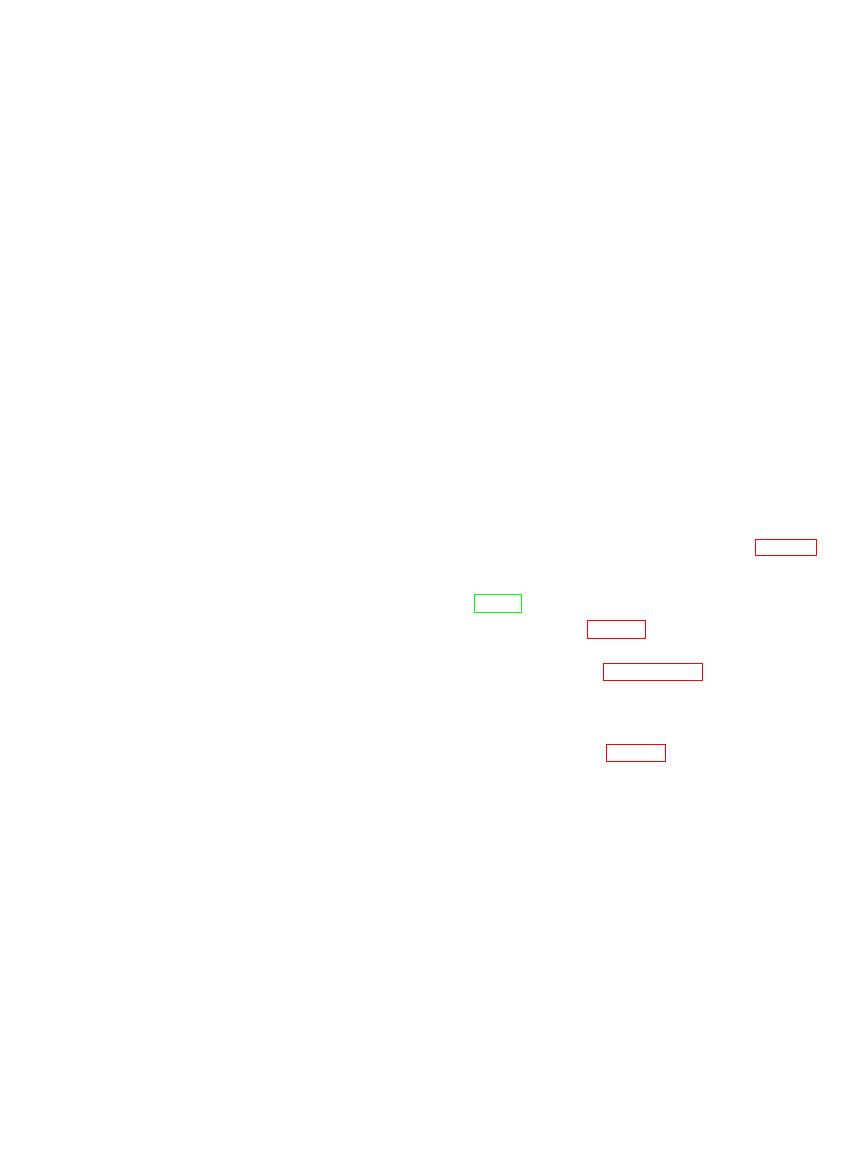
b. Disassembly.
(7) Inspect parts for cracks, breaks, dis-
(1) Refer to figure 34 for disassembly.
tortion, corrosion, and damaged
threads. Replace defective parts. Re-
(2) Care must be exercised to avoid scor-
place all seals.
ing or scratching the metering valve
(59, fig. 34) when withdrawing it
d. Bench Timing.
from the pump housing (125).
(1) Apply 30 to 100 psi of air pressure to
(3) The transfer pump blades (69) are
the No. 1 outlet. Turn the rotor in the
made of a special molded carbon-
direction of rotation until the dis-
graphite compound which will chip
charge port comes into partial regis-
easily if not handled with extreme
try with No. 1 port in the hydraulic
care.
head. Air pressure then will force the
(4) Extreme care must be exercised to
plungers in their extreme outward
prevent any scoring or scratching of
limit.
the plungers (93 ) or their bore.
(2) Continue to turn the rotor until the
(5) Note the position of the etched arrow
cam rollers contact the oppositely
on the cam ring (97). The position of
spaced cam lobes. This will be evi-
the arrow must be maintained during
denced by an increase in effort to turn
reassembly.
the rotor. At this time injection be-
c. Cleaning, Inspection, and Repair.
gins and the timing marks should be
(1) It is essential to have a small tank of
aligned. Refer to figure 23. If the
filtered fuel oil (or approved cleaning
timing marks do not align, the cam
solvent) available in which component
ring (97) must be reinstalled in clock-
parts must be thoroughly washed. Do
wise rotation.
not use abrasive materials in cleaning
e. Reassembly and Installation.
pump parts. Flush out all oil passages
(1) Refer to figure 34 and reassemble the
and ports with clean fuel oil under
fuel pump.
compressed air pressure.
(2) Position the cam ring (97) with
(2) Inspect all parts for wear, scores,
etched arrow as noted in disassembly.
nicks, or burrs. Replace if necessary.
(3) Inspect parts for gum deposits. If
(3) Time the fuel pump to engine (para
gum deposits are apparent, the part
72).
must be washed thoroughly with a
brush and solvent.
(4) Inspect the transfer pump blades for
wear or chipping; if they are shorter
b. Cleaning and Inspection.
than 1.0930 inches, they must be re-
placed.
(2) Check fuel tank for leaks. Repair if
(5) Inspect all springs for fatigue. Re-
necessary.
place if necessary.
(3) Replace tank if necessary.
(6) Inspect the solenoid assembly for
shorts, grounds, and open circuits.
65
AGO 8166A

